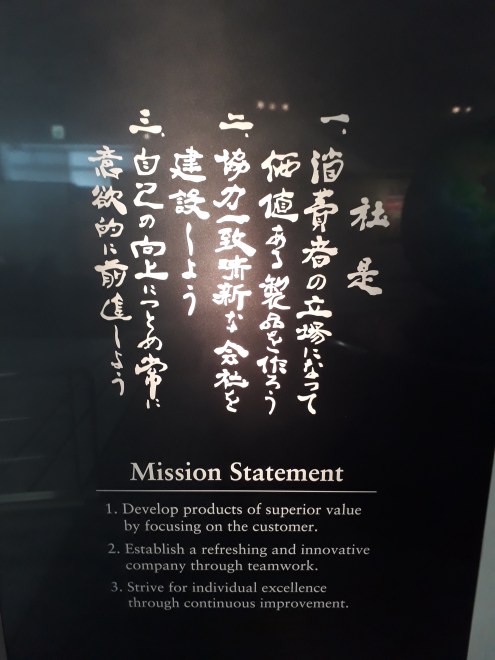Being a good student, I already had some of the history of Hamamatsu down to an ‘elevator pitch’ but let’s see what I missed. The bikes were not going anywhere but I was still teasing myself with thoughts of what the top floor had in store for me. First I had to make my way through the manufacturing exhibition.
As you’d hope, there was some interactive stuff. Pulling levers to rotate a car door on a fully automated robot production line was a good one -great sounds. I knew from a little inside tip that there was another machine which would deliver me a Suzuki egg! (It had a car in it … booooo) You were walked through the casting process and got to see some models too.

I’ve got a bit of a thing about casting since making my own ally ashtray in Big Pete’s GoP many moons back …
There was some stuff around the factory itself and the sheer scale of the site can be seen from the aerial photos taken through the years. (come on! get to the bikes already!)


I moved up to the next floor and came pretty much face to face with The Man Who Started It All. Not the most recognisable face, sure but here he was. The man who had used his engineering skills and business acumen to redirect Suzuki from a failing loom making business, to an upstart car manufacturer closed down by the war as ‘non essential manufacturing’ , reinvented AGAIN as a motorcyle and small utility manufacturer, and onto the business that continues to thrive today. It was pretty emotional. Plus, I hadn’t really spoken to anyone all day and this guy was willing to listen a while.

And finally – here they spread in front of me, I CAN SEE THE BIKES! Be cool. Breathe.

I’m still on early history trip now and am duly reminded that from day 1 the business purpose was to serve its customers. Right now there was a gap in the market for cheap and easy to maintain transport that everyone could use. Suzuki’s engineers calculated that 36cc gave sufficient output having been combined with a pedal drive and the Power Free E2 was born in the early 50s.

Development continued at pace in Hamamatsu. It was 1954 and the team were set up at the prestigious Mount Fuji hill climb – it was show time. Their win there in the 90cc class put them firmly on the manufacturer’s map. They were contenders.

As well as speed and power trials, Suzuki also wanted to demonstrate the reliability and tenacity of their new machines. A pair of brothers spent 2 years riding this ‘Diamond Free’ 58cc model 47000km between Bangkok and Paris. The road network was barely developed at that point and you can only imagine the challenges along the way, but the machine survives to this day, on show here in Hamamatsu.

By the early 60s. Suzuki were ready to take on the world renowned challenge, the ultimate test of rider and machine – the Isle of Man TT Race. The team ran machines from 1960 but it wasn’t until Mitsuo Itoh took the ride in the 50cc class on the RM63 that Suzuki got to lift their first TT trophy.



Keep posted as I head further into the 60s, 70s and dip a toe into what Suzuki had in store for the 80s




You must be logged in to post a comment.